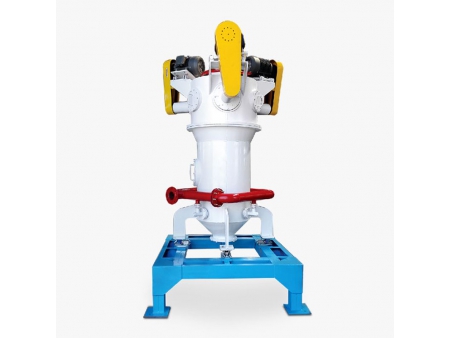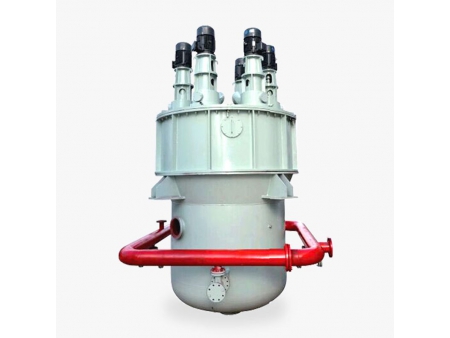Superheated Steam Jet Mill
Using superheated steam as the grinding gas, improved energy efficiency
Using superheated steam as the grinding gas, improved energy efficiency
- Superheated steam source providing high energy utilization rate and low operating cost
- Grinding particle size range D50: 0.5-10 μm
- Revolutionary innovation of dry grinding technology
- Improved energy efficiency, low carbon, energy saving and environmental protection for plants
- Applicable: bulk solid wastes such as steel slag, slag and fly ash; non-metallic minerals such as calcium carbonate, talc and quartz; new materials such as lithium carbonate, lithium iron phosphate and precipitated silica.
As an upgraded version of the conventional jet mill, the superheated steam jet mill utilizes a unique high-temperature mechanical sealing technology and cooling technique. High-temperature steam is used as the kinetic energy source to propel materials to collide and grind at an accelerated speed through a specially designed Laval nozzle. After being ground, the materials undergo cyclone classification, at which point a heat preservation collection system collects the qualified powders while any coarse particles fall back into the grinding chamber. The entire process is achieved without using any liquids.
- Producing nanometer-size powders under a dry process
- Superheated steam source creating a working pressure between 8-40 bar and steam temperature between 230-360 ℃, which can also dry the powder with heat
- High jet velocity provides high kinetics and strong grinding force with nozzle outlet velocity up to 1020 m/s, suitable for finer powder production
- Low viscosity of steam makes it easier to obtain finer powders
- Full self-grinding of the material, ensuring product purity and wear resistance of the mill
- High speed and low dynamic viscosity increase grinding efficiency and classification accuracy while reducing over-grinding
- Good particle shape with high activity
- Classifier wheel automatically separates materials through airflow, preventing coarse particles from discharge
- Key components such as lining, classifier and nozzle are made from ceramic materials (e.g. Alumina, zirconia, or silicon carbide) for zero contact with metal during the whole grinding process
- The classifier rotor can be installed horizontally or vertically; more rotors available
- Rotor speed adjustable by frequency conversion allowing flexible particle size distribution adjustment
- Closed loop system, reducing dust and noise and creating a clean production environment
- PLC control system, easy to operate
- Can be used for superfine processing of high-viscosity products
- Motor connection via belt improves rotating speed
- Multi-stage classifier optional, allows the production of multiple particle sizes at one time
- Precise weighing control system available. ensuring product stability and consistency
- Explosion-proof design or nitrogen circulation upgrades optional, to meet ultra-fine grinding requirements for flammable, explosive or easily oxidized materials
| Parameter (S-MQL/W) | 2000 | 3000 | 4000 | 6000 | 10000 | 15000 | 20000 |
| Steam consumption (kg/h) | 1000~2000 | 1500~3000 | 2000~4000 | 3000~6000 | 6000~10000 | 10000~15000 | 15000~20000 |
| Steam pressure (bar) | 5~40 | 5~40 | 5~40 | 5~40 | 5~40 | 5~40 | 5~40 |
| Temperature (℃) | 260~360 | 260~360 | 260~360 | 260~360 | 260~360 | 260~360 | 260~360 |
| Production capacity (kg/h) | 400~1000 | 600~1500 | 800~2000 | 1200~3000 | 2000~5000 | 3000~8000 | 4000~10000 |
| Product size (D50:μm) | 2~10 | 2~12 | 2~12 | 2~14 | 2~14 | 2~16 | 2~16 |
Note: The particle size, specific gravity, hardness, and moisture of raw materials are all closely associated to the production capacity. These parameters should only be used as a reference; for more detailed information please consult our engineers.



